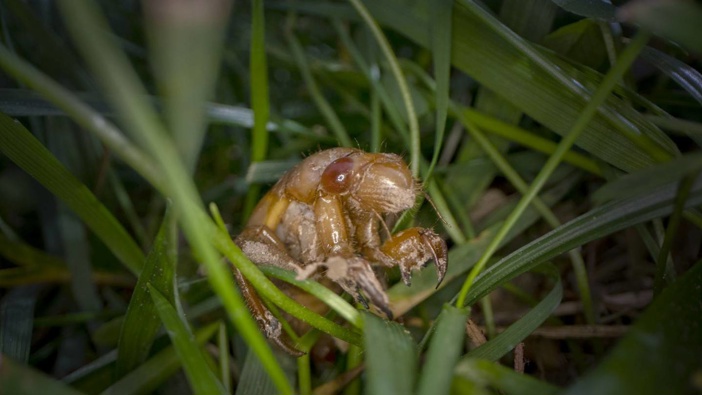Follow
the podcast on

Under America, primordial creatures are stirring from a decades-long slumber.
Sifting through a shovel load of dirt in a suburban backyard, Michael Raupp and Paula Shrewsbury find their quarry: a cicada nymph.
And then another, and another and four more.
In maybe a third of a square foot of dirt, the University of Maryland entomologists find at least seven cicadas -- a rate just shy of a million per acre. A nearby yard yielded a rate closer to 1.5 million.
And there's much more afoot. Trillions of the red-eyed black bugs are coming, scientists say.
Within days, a couple weeks at most, the cicadas of Brood X (the X is the Roman numeral for 10) will emerge after 17 years underground. Also known as the Great Eastern Brood, these bugs are much larger and louder than the common New Zealand Cicada (Amphipsalta zelandica) . The 2.7cm kiwi bug is also far smaller than the 3.8cm American giants (Magicicada septendecim). Thank goodness they spend so long underground.
There are many broods of periodic cicadas that appear on rigid schedules in different years, but this is one of the largest and most noticeable. They'll be in 15 states from Indiana to Georgia to New York; they're coming out now in mass numbers in Tennessee and North Carolina.
When the entire brood emerges, backyards can look like undulating waves, and the bug chorus is lawnmower loud.
The cicadas will mostly come out at dusk to try to avoid everything that wants to eat them, squiggling out of holes in the ground. They'll try to climb up trees or anything vertical, including Raupp and Shrewsbury. Once off the ground, they shed their skins and try to survive that vulnerable stage before they become dinner to a host of critters including ants, birds, dogs, cats and Raupp.
It's one of nature's weirdest events, featuring sex, a race against death, evolution and what can sound like a bad science fiction movie soundtrack. They've inspired plenty of bad B movies, but also Bob Dylan's song Day of the Locusts, which he wrote following the 1970s emergence of the swarm in New Jersey.
Some people may be repulsed. Psychiatrists are calling entomologists worrying about their patients, Shrewsbury said. But scientists say the arrival of Brood X is a sign that despite pollution, climate change and dramatic biodiversity loss, something is still right with nature. And it's quite a show.
Raupp presents the narrative of cicada's lifespan with all the verve of a B-movie feature:
"You've got a creature that spends 17 years in a COVID-like existence, isolated underground sucking on plant sap, right? In the 17th year these teenagers are going to come out of the earth by the billions if not trillions. They're going to try to best everything on the planet that wants to eat them during this critical period of the nighttime when they're just trying to grow up, they're just trying to be adults, shed that skin, get their wings, go up into the treetops, escape their predators," he says.
"Once in the treetops, hey, it's all going to be about romance. It's only the males that sing. It's going to be a big boy band up there as the males try to woo those females, try to convince that special someone that she should be the mother of his nymphs. He's going to perform, sing songs. If she likes it, she's going to click her
"Then she's going to move out to the small branches, lay their eggs. Then it's all going to be over in a matter of weeks. They're going to tumble down. They're going to basically fertilise the very plants from which they were spawned. Six weeks later the tiny nymphs are going to tumble 80 feet from the treetops, bounce twice, burrow down into the soil, go back underground for another 17 years."
"This," Raupp says, "is one of the craziest life cycles of any creature on the planet."
Take your Radio, Podcasts and Music with you









